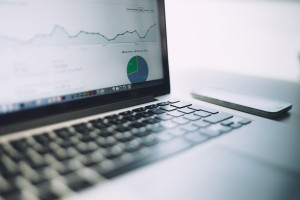
Gathering information in Google Analytics can be challenging because of the huge amount of data and options available. You may find yourself spending time looking at irrelevant or insignificant data. To avoid this, we’ve come up with a Google Analytics reporting routine to extract all the important information we need to measure our sales and marketing goals.
In this video, I will walk through our Google Analytics reporting routine.
Once I log in, the first thing I will do is set my time frame. Generally, I do a year-over-year comparison which gives a better indication of trends, as opposed to looking at a shorter time frame, like month-over-month.
Now let’s take a look at the four main areas of the Google Analytics dashboard.
1. Audience
In the audience section, you get a broad view of your website’s traffic, like the sessions, users and page views. An interesting area within the audience section is mobile. Since mobile use is rapidly increasing it’s a good idea to check into this section to see if your online content is well received on mobile in particular.
2. Acquisition
The acquisition section is the place to see how people are reaching your web pages. I will click on all traffic and go into the channels section to view this. Typically, organic and direct search take the top spots in user acquisition, but to get more details I would click into referrals and social.
- Referrals
In the referrals section, you get a detailed report about how users are coming to your website specifically through other links on the web. Check to see if you’re featured on other websites that are bringing you traffic. You should also frequent this section to ensure that your spam is under control, making your data as accurate as possible. To do this, you’ll have to create a spam segment to filter your referrals. To add a new spam segment, click “New Segment” at the top and choose your preferences. - Social
Another important area in the acquisition section is social. Here you’ll see how many users reached your website trough social media. It gives you the ability to drill down into each social media platform for more details including, what pages were shared on each platform and how it impacted your website traffic.
3. Behaviour
Next is the behaviour section, where you’ll get an idea of what content users are consuming. For this section, I would not compare by dates, especially if you’re likely to have new content on a regular basis. By clicked full report you’ll get additional details on each page like your bounce percentage and how long users spent on that page. If a page is of particular interest, I would use the secondary dimensions filter for details about how people are reaching that page. For example, I’d click on a page then click on secondary dimensions, and select source/medium to see the acquisition breakdown. This section is great for determining what content is successful.
4. Conversions
The last tab we like to monitor is our goals which are located under conversions. We have created goals to track whitepaper downloads. A conversion is recorded as a success when a user reaches our thank you page. This view is great to see the number of conversations and your conversion rate, but if you want additional information I’d check out the landing page of each goal in the behaviour tab, and add the secondary dimension as source/medium. This way you’d get an idea of how people are reaching your landing page versus those who converted.
That is our typical routine when conducting Google Analytics reporting. Are there any important features that we’re missing or should be tracking? If so, let us know in the comments section below.
For more great how-to videos check out our resources page.
